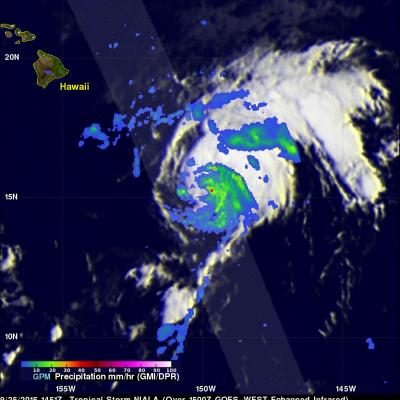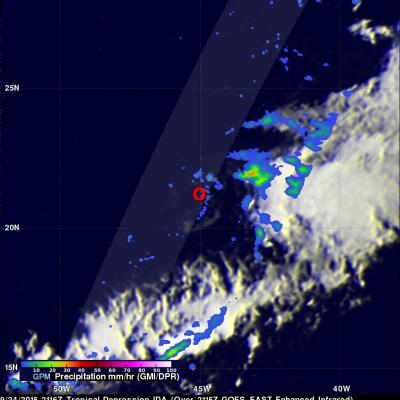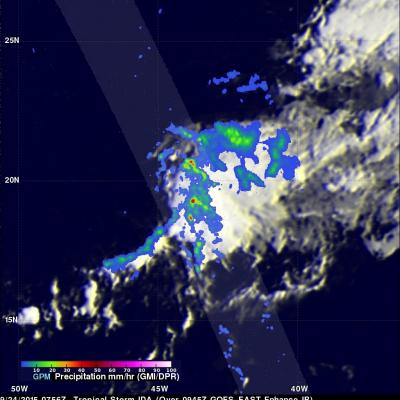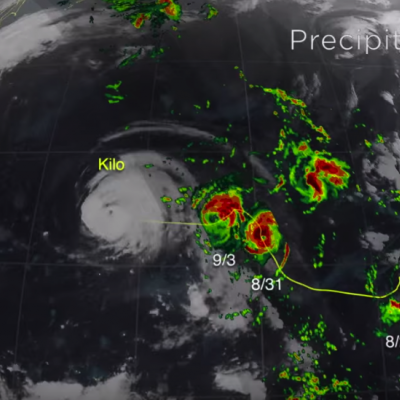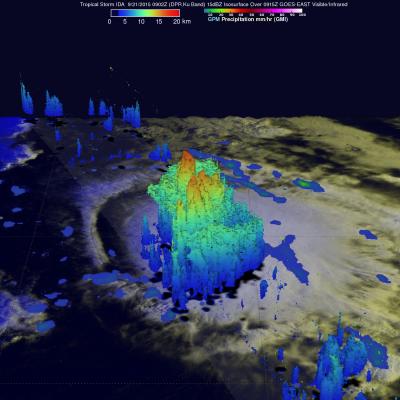GPM Monitors New Tropical Storm Niala
The GPM core observatory satellite flew directly above newly formed tropical storm NIALA (06C) on September 25, 2015 at 1451 UTC (4:41 AM HST). Rainfall data were collected by GPM's Microwave Imager (GMI) and Dual-Frequency Precipitation Radar (DPR) instruments showing that intense storms just northeast of NIALA's center of circulation were dropping rain at a rate of over 126 mm (4.96 inches) per hour. Another rain band wrapping around NIALA's northeastern side was found to contain rain falling at a rate of over 56 mm (2.2 inches) per hour. 3-D radar reflectivity data collected by GPM's radar


